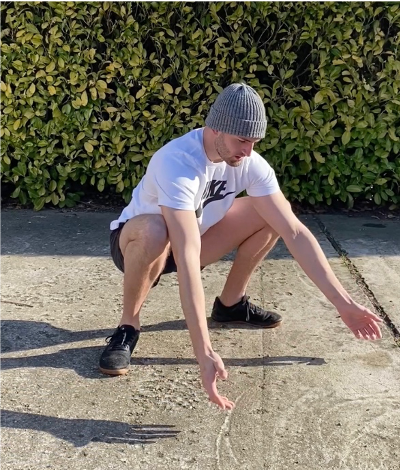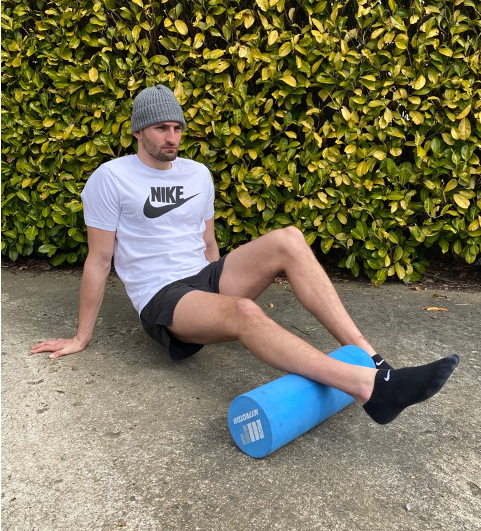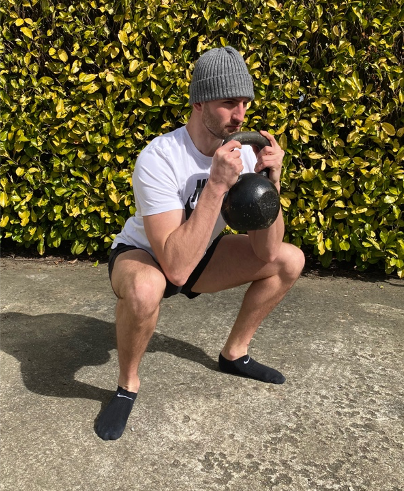
Submitted by Ashley Edwards on Wed, 01/04/2020 - 16:52
The squat is an essential movement pattern that becomes increasingly difficulty for a majority of people as they get older. Now this can be down to many reasons, but what it often comes down to is a lack of mobility, this will happen over time if the movement isn’t performed regularly, which reminds me of the old saying “Use it or lose it”. Contreras et al (2016) found that the Vastus Lateralis (quadriceps) were recruited significantly more in a deep squat when compared against a parallel squat. The Vastus Lateralis (VL) is the biggest and most powerful of the four quadricep muscles, utilising a full range of motion will transfer into strength and hypertrophy gains. Kubo, Ikebukuro and Yata (2019) confirmed this with their study where they took 17 participants and randomized them into a full squat group and a half squat group. Each group completed 2 squat sessions a week for 10 weeks and found that the full squat is more effective in developing the lower limbs. Therefore, if you’re looking to increase quadriceps size and strength, then the deep squat would be a much better alternative than the parallel/half squat. However, an effective deep squat can only be performed if you have sufficient mobility in the ankles/knees/hips. Below are a number of methods that I think are effective at improving/maintaining your squat-specific mobility. Thus, helping you to get the most out of this exercise!
30 Second Squat Hold
The world-renowned expert in spine function Dr Stuart McGill performs a 30 second deep squat hold daily and claims this to be the reason he has retained his hip mobility. This is a simple and effective drill that will enable lifters and athletes to retain their squat mobility in just 30 seconds a day. This can be done anywhere, I’d suggest doing this as part of the morning routine to get yourself feeling mobile before you start your day, especially if you’re to be sat as a desk all day.
Tips: No additional resistance, keep your heels down, avoid your knees caving in, keep your foot arches open and squat down as low as you can.
Soft Tissue Work (e.g. Foam Rolling)
Self-myofascial release is an effective drill to acutely increase our dorsiflexion (ankle mobility), which in turn will help improve our form when we squat. Dorsiflexion is required in movements like squats and lunges where the knee has to travel forward, typically the better the ROM at the ankle the easier it is to perform the movements efficiently.
What to do:
Bring one of your legs on to the foam roller so that your calf (gastrocnemius) is on the roller and you are supporting yourself with your hands and the other foot. Now you are going to roll the full length of your calf along the foam roller for 60 seconds, as you roll, try to rotate your leg externally and internally to ensure you’re hitting all of the calf. Supporting your bodyweight can be quite taxing at time, so it may be better to roll in sections. For example, from the middle of your calf to just below your knee and from the middle of your calf down your soleus to just above your heel. The soleus can significantly influence the ROM while squatting, using a small ball to roll that area may be more effective than a foam roller (*warning the ball is more intense than the roller*).
Tips: Avoid rolling of joints, try to relax the muscle you’re rolling on.
Warm Up with Tempo Goblet Squats
The goblet squat is arguably the most mechanically friendly way to squat, the weight sits in front of your torso which allows us to sit deeper in the squat and start to gain an active ROM.
What to do:
Grab a dumbbell, plate or kettlebell and hold it up in front of you close to your chest with your elbows tucked in. You’re then going to squat down slowly for 5s until you are as deep as you can go while maintaining a straight back, braced core, heels on the floor, no knee cave and sit there for 1-2 second before coming back up. Remember it’s important you don’t relax at the bottom and lose tightness, we want to maintain control over the movement throughout, focusing on our position. Perform 6-8 reps and your legs and core should be fired up and ready to go into your barbell squat.
Hope this helps,
Coach Lewis
References
Contreras, B., Vigotsky, A.D., Schoenfeld, B.J., Beardsley, C. and Cronin, J., 2016. A comparison of gluteus maximus, biceps femoris, and vastus lateralis electromyography amplitude in the parallel, full, and front squat variations in resistance-trained females. Journal of applied biomechanics, 32(1), pp.16-22.
Kubo, K., Ikebukuro, T. and Yata, H., 2019. Effects of squat training with different depths on lower limb muscle volumes. European journal of applied physiology, 119(9), pp.1933-1942.




